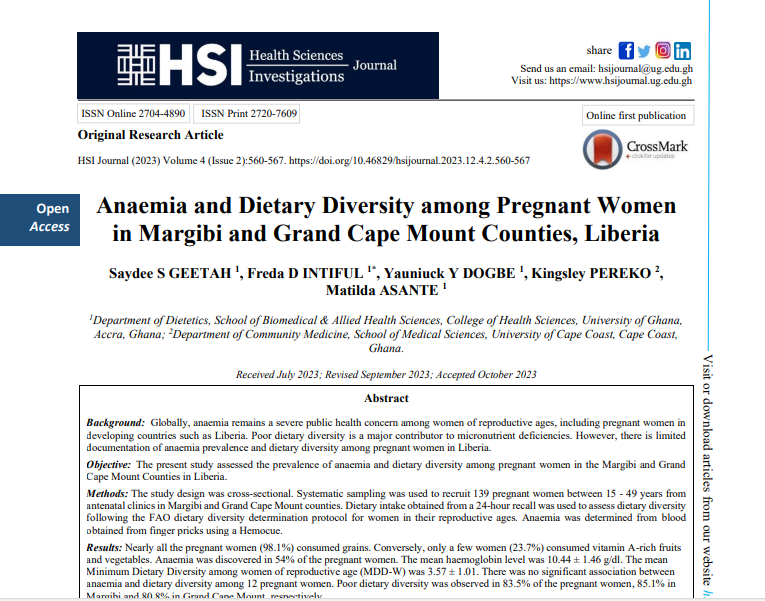Anaemia and Dietary Diversity among Pregnant Women in Margibi and Grand Cape Mount Counties, Liberia.
Anaemia and Dietary Diversity among Pregnant Women
Abstract
Background: Globally, anaemia remains a severe public health concern among women of reproductive ages, including pregnant women in developing countries such as Liberia. Poor dietary diversity is a major contributor to micronutrient deficiencies. However, there is limited documentation of anaemia prevalence and dietary diversity among pregnant women in Liberia.
Objective: The present study assessed the prevalence of anaemia and dietary diversity among pregnant women in the Margibi and Grand Cape Mount Counties in Liberia.
Methods: The study design was cross-sectional. Systematic sampling was used to recruit 139 pregnant women between 15 - 49 years from antenatal clinics in Margibi and Grand Cape Mount counties. Dietary intake obtained from a 24-hour recall was used to assess dietary diversity following the FAO dietary diversity determination protocol for women in their reproductive ages. Anaemia was determined from blood
obtained from finger pricks using a Hemocue.
Results: Nearly all the pregnant women (98.1%) consumed grains. Conversely, only a few women (23.7%) consumed vitamin A-rich fruits and vegetables. Anaemia was discovered in 54% of the pregnant women. The mean haemoglobin level was 10.44 ± 1.46 g/dl. The mean Minimum Dietary Diversity among women of reproductive age (MDD-W) was 3.57 ± 1.01. There was no significant association between anaemia and dietary diversity among 12 pregnant women. Poor dietary diversity was observed in 83.5% of the pregnant women, 85.1% in Margibi and 80.8% in Grand Cape Mount, respectively.
Conclusion: This study confirms evidence of anaemia and poor dietary diversity among pregnant women. It highlights evidence for the need to encourage and improve diversity in dietary intake. This can be achieved through awareness, education and knowledge of dietary diversity during pregnancy.


